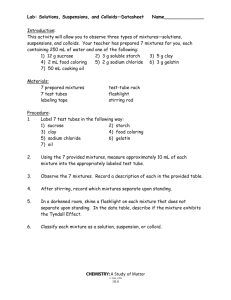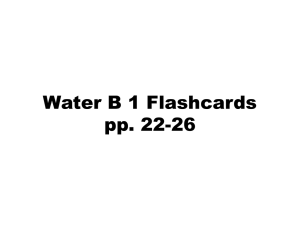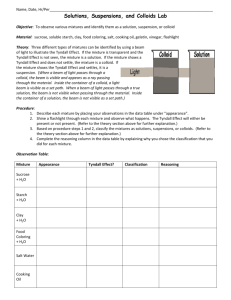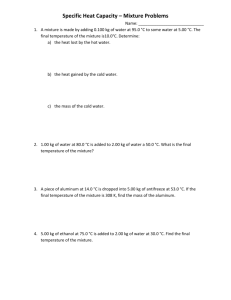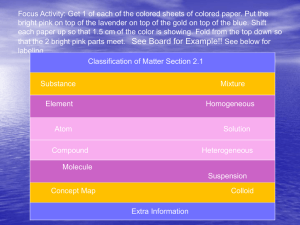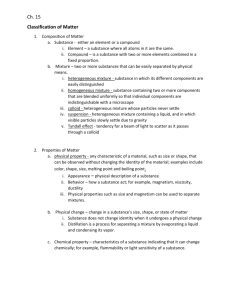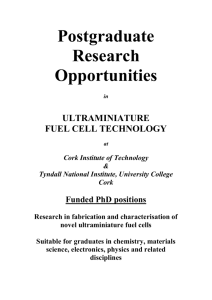Solution Mixtures Lab: True, Colloid, Suspension Classification
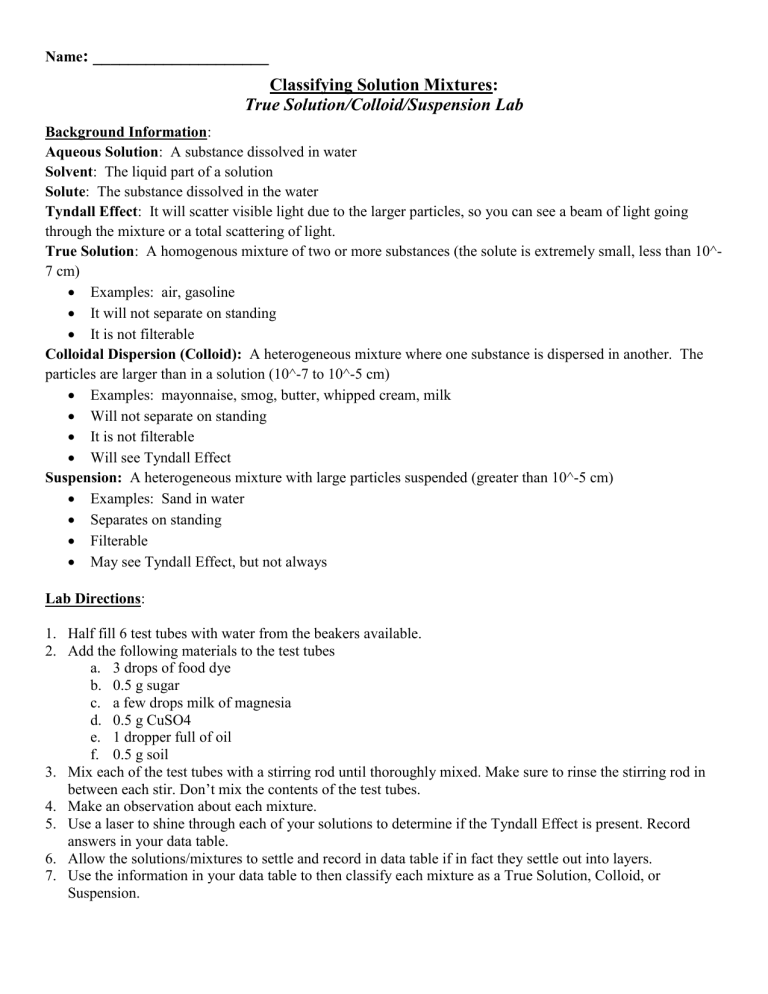
Name
: ____________________
Classifying Solution Mixtures:
True Solution/Colloid/Suspension Lab
Background Information :
Aqueous Solution : A substance dissolved in water
Solvent : The liquid part of a solution
Solute : The substance dissolved in the water
Tyndall Effect : It will scatter visible light due to the larger particles, so you can see a beam of light going through the mixture or a total scattering of light.
True Solution : A homogenous mixture of two or more substances (the solute is extremely small, less than 10^-
7 cm)
Examples: air, gasoline
It will not separate on standing
It is not filterable
Colloidal Dispersion (Colloid): A heterogeneous mixture where one substance is dispersed in another. The particles are larger than in a solution (10^-7 to 10^-5 cm)
Examples: mayonnaise, smog, butter, whipped cream, milk
Will not separate on standing
It is not filterable
Will see Tyndall Effect
Suspension: A heterogeneous mixture with large particles suspended (greater than 10^-5 cm)
Examples: Sand in water
Separates on standing
Filterable
May see Tyndall Effect, but not always
Lab Directions :
1.
Half fill 6 test tubes with water from the beakers available.
2.
Add the following materials to the test tubes a.
3 drops of food dye b.
0.5 g sugar c.
a few drops milk of magnesia d.
0.5 g CuSO4 e.
1 dropper full of oil f.
0.5 g soil
3.
Mix each of the test tubes with a stirring rod until thoroughly mixed. Make sure to rinse the stirring rod in between each stir. Don’t mix the contents of the test tubes.
4.
Make an observation about each mixture.
5.
Use a laser to shine through each of your solutions to determine if the Tyndall Effect is present. Record answers in your data table.
6.
Allow the solutions/mixtures to settle and record in data table if in fact they settle out into layers.
7.
Use the information in your data table to then classify each mixture as a True Solution, Colloid, or
Suspension.
Sample Observations Tyndall
Effect?
Settles? Solution,
Colloid or
Suspension
Why?
Conclusions :
1.
Define the Tyndall Effect:
2.
If the mixture separates upon standing, the mixture is a ______________.
3.
If the mixture does NOT separate upon standing and the Tyndall Effect is NOT seen, the mixture is a
_____________.
4.
If the mixture does NOT separate upon standing and exhibits the Tyndall Effect, the mixture is a
_______________.
5.
True Solutions do not exhibit the Tyndall Effect. Why?
6.
What ultimately determines what type of solution you have? Why can’t we just use this property?
